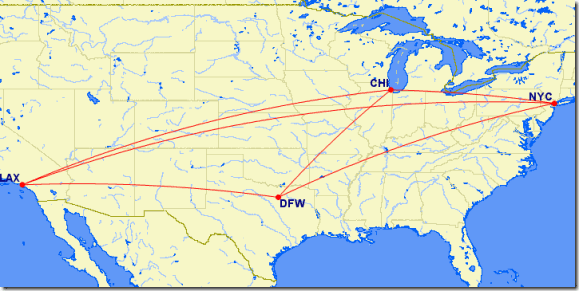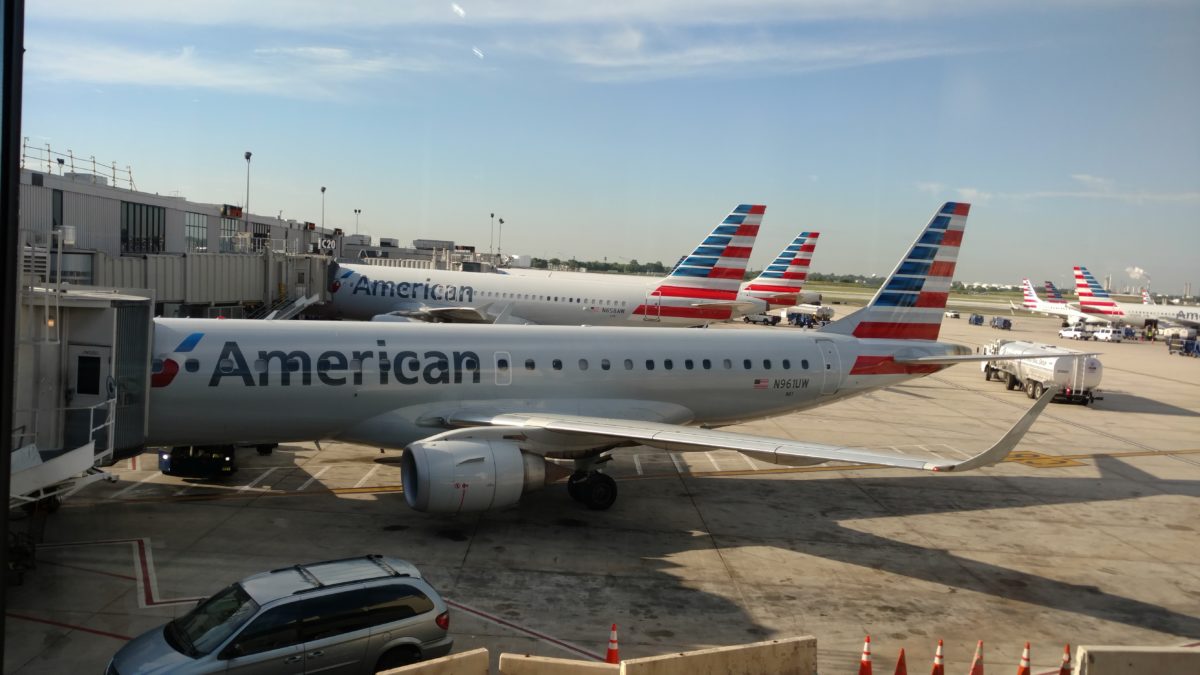NOTICE: This post references card features that have changed, expired, or are not currently available
“Delta award availability sucks”. If you spend much time in the frequent flyer community, you’re bound to hear that, or something very similar. For newcomers, this can be confusing. After all, if you plug in just about any flight request into Delta’s award search engine, you will find award availability. The problem is that most of the options will require huge numbers of miles. That’s because Delta has multiple levels of awards, currently called “Saver”, “Standard”, and “Peak” (and they plan to move to a 5 levels next year). When frequent flyers talk about award availability, they’re looking explicitly for the lowest priced awards. When people say “Delta award availability sucks” they mean that they can’t find saver level awards.
Lately, many of my Delta award searches have returned a lot of saver level award space. So, I wondered if maybe Delta had turned things around? Also, with the AA / US Airways merger, I wondered if AA award space was better than before. I didn’t have any practical way to test all possible award requests across time, but I did run a limited test. I asked Wikipedia to tell me which metropolitan areas in the US were most populated (New York, LA, Chicago, and Dallas), then I picked a random date (July 22, 2014) to look for one-way award space between each of those areas.
For New York City, I included three airports: EWR, JFK, and LGA. For Chicago, I included ORD and MDW. For Dallas, I included DFW and DAL. For Los Angeles I included only LAX (because I was lazy). Here’s a picture of all of the routes I tested (courtesy of Great Circle Mapper):
For each award search, I recorded the lowest economy award price available at the time from each of these airlines: American Airlines, Delta, Southwest, and United. In each case I used the airline’s own website to check for availability. In each case I was careful not to log in since my elite status and/or credit card held with an airline could possibly skew results. All of the airlines in this experiment, except for Delta, offer one-way awards for half the price of round trip (Delta will do so starting Jan 1 2015). Delta currently shows the full round-trip price, so I recorded half of the displayed price in order to better match the results from other airlines.
Note that I did not pay attention to how good a flight was. I simply recorded the best available price in miles. So, flights that took off at 5:15 in the morning and had three stops along the way were treated the same as more desirable non-stop flights at reasonable hours.
Results
Most airlines charge 25,000 miles for round-trip saver-level economy awards within the US, so for these one-way searches I was looking for awards to cost 12,500 miles or less. Southwest blew away the competition. They are the only airline in this roundup that ties award prices explicitly to current fares. With Southwest, every award search had availability for less than 12,500 miles with some available for as little as 7,032 miles.
The next best showing, after Southwest, was American Airlines. They had saver level availability on all search results except for two: Chicago to Los Angeles, and New York City to Los Angeles.
United was third. They had saver level availability on all search results except for three: Chicago to Los Angeles, Dallas to Los Angeles, and Los Angeles to Dallas.
Poor Delta came in last. Five flights were unavailable at the saver level. As with AA and United, all of these involved Los Angeles. Full results are shown in the table below. Awards priced over 12,500 are shaded red.
| Airline | Origin | Destination | One-way miles |
| AA | Chicago | Dallas | 12500 |
| AA | Chicago | LAX | 20000 |
| AA | Chicago | NYC | 12500 |
| AA | Dallas | Chicago | 12500 |
| AA | Dallas | LAX | 12500 |
| AA | Dallas | NYC | 12500 |
| AA | LAX | Chicago | 12500 |
| AA | LAX | Dallas | 12500 |
| AA | LAX | NYC | 12500 |
| AA | NYC | Chicago | 12500 |
| AA | NYC | Dallas | 12500 |
| AA | NYC | LAX | 20000 |
| Delta | Chicago | Dallas | 12500 |
| Delta | Chicago | LAX | 20000 |
| Delta | Chicago | NYC | 12500 |
| Delta | Dallas | Chicago | 12500 |
| Delta | Dallas | LAX | 20000 |
| Delta | Dallas | NYC | 12500 |
| Delta | LAX | Chicago | 20000 |
| Delta | LAX | Dallas | 20000 |
| Delta | LAX | NYC | 12500 |
| Delta | NYC | Chicago | 12500 |
| Delta | NYC | Dallas | 12500 |
| Delta | NYC | LAX | 20000 |
| Southwest | Chicago | Dallas | 7683 |
| Southwest | Chicago | LAX | 10288 |
| Southwest | Chicago | NYC | 7032 |
| Southwest | Dallas | Chicago | 7683 |
| Southwest | Dallas | LAX | 8334 |
| Southwest | Dallas | NYC | 8204 |
| Southwest | LAX | Chicago | 8985 |
| Southwest | LAX | Dallas | 8334 |
| Southwest | LAX | NYC | 11134 |
| Southwest | NYC | Chicago | 7032 |
| Southwest | NYC | Dallas | 8204 |
| Southwest | NYC | LAX | 11134 |
| United | Chicago | Dallas | 12500 |
| United | Chicago | LAX | 25000 |
| United | Chicago | NYC | 12500 |
| United | Dallas | Chicago | 12500 |
| United | Dallas | LAX | 25000 |
| United | Dallas | NYC | 12500 |
| United | LAX | Chicago | 12500 |
| United | LAX | Dallas | 25000 |
| United | LAX | NYC | 12500 |
| United | NYC | Chicago | 12500 |
| United | NYC | Dallas | 12500 |
| United | NYC | LAX | 12500 |
Conclusion
Given that this experiment was extremely limited (I picked only one travel day and four locations), we can’t really assume that these results are generalizable. The best we can really say is that it adds a bit of data to the conversation regarding which airlines have the best award availability. Does Delta’s award availability really suck? Well, from these results, I’d say yes if you’re traveling from or to Los Angeles (on July 22, 2014). Otherwise, their award availability was just as good as American and United.
This experiment raises more questions than it answers. What if I had chosen a weekend date rather than July 22, 2014 (which happens to be a Tuesday)? Would the results be different? What about flights during peak times such as Thanksgiving or Christmas? What about first class awards? Flights to and from small airports? International flights? Going forward, I hope to answer most of these questions with new experiments.
Reader feedback
Do you find this type of report interesting? Do you have any suggestions for how I can improve similar experiments in the future? Please comment below.






I believe in your conclusion. Ever since I flew delta for over 4 years, I accumulated over 430K skymiles but was never able to use it because each time I compared award flights, AA and Southwest beats delta so that I have to choose other airlines other than delta. I have nevee flew a single delta award flight so far, not because I do not want to, but because I never find delta award is better priced in terms of miles than AA or Southwest. Poor delta performance.
Another point: when you book 2 award flights, delta price in term of miles go up significantly. Basically, it means I can never book 2 economy award flight at the same price as one award price. Maybe, I should buy one first and buy secoind in anither transaction so that the second ticket costs the same miles as the first one. But I did not try it so far. With AA or Southwest, you pay the same miles per ticket when you buy one or two or more tickets.
Under the new junta, AA will charge as much as 50K for one-way in economy. Award availability at a particular level may well be limited to just 1 seat per flight.
Unless somebody develops some sort of script to search tens of thousands of seats for award availability (hmmm), it isn’t easy to run an award availability test that would satisfy the “scientific method.” That said, my favorite “real world” availability test is try to get somebody from an East Coast airport to Hawaii. The reason it’s a great test is because it combines two essential elements of a “reasonable” ff program. First, you’re probably going to have to find transcon seats to get to an airport that serves Hawaii. While this doesn’t sound that difficult, it can in fact be impossible. Second, Hawaiian availability tells us how good the airline will be in making seats available to “aspirational” destinations — the ones people want to fly to.
Over the years, I’ve done this search several times (because I wanted to go to Hawaii!) and the results show it’s getting harder to find seats on every airline, but that it’s particularly hard to find seats on DL. Indeed, it got so hard to find DL seats that I stopped flying DL, and pretty much abandoned participation in their ff program. So my knowledge is rusty.
I can tell you with certainty that of the big three airlines — DL, AA/US and UA — UA loads the most award seats. I can’t imagine anyone would really challenge this assertion. If you do 10 different award searches, you’ll reach the same conclusion, and it doesn’t matter if these are domestic or int’l searches. UA also has the most partner award seats, and they’re the easiest to find (because they’re loaded on UA’s website).
AA/US are an interesting case. AA availability USED to be about as good as UA, but got much worse while they were in bankruptcy. US award availability is worse than AA’s, and probably approaches DL’s levels. US is particularly bad at loading award seats at times folks will likely want to travel. Like I would submit the mark of a good loyalty program is not how many seats are loaded on Wednesdays, but how many are available on Fridays and Sundays. Pick any semi-busy travel date and look for US award seats. The odds are almost zero you’ll find them; you might currently find them on AA. It will be interesting to see which availability survives the merger.
In any event, I hope this comment helps anyone who wants to take the time to do a more scientific survey of this important issue.
Someone didn’t go to grad school…
Just booked LA to Tampa with delta miles 1st class. Needed only one way which required 100,000 miles. Round trip was only 75,000 however. What? Why?
Until next year, all Delta awards are priced as round trip. You found a flight that should have cost 50k each way, so they charged the full round trip 100k price. When booking a true round trip, it looks like you found a return flight that priced at 25k, so they charged 50k outbound + 25k return. If you plan to throw away the return anyway, then call and convert the return to a economy flight for 12.5k. That way, the total cost of your award will go down to 62.5k
Thanks for doing this, it’s definitely helpful and – I would argue – though limited in scope it is illustrative of the broader trend. Southwest really is great, American is pretty darned good, and Delta does, true to form, suck.
I live in Atlanta and have conducted various permutations of your “experiment” over the years when I’ve tried to actually use Skymiles to take a trip. Flights to Vegas – no saver availability. Flights to SFO – nothing. Flights to NYC. Limited. Even flights to Orlando!?!?! Virtually nothing. Oh, and when flights are available, they’re connecting…and this is all from Delta’s *HUB*, for those complaining about choice of cities. The conclusion is it has always been: Delta award availability sucks.
I genuinely hope their promises of improvements are true but I’m very skeptical. Oh, and my favorite ongoing experiment is to plug in Atlanta to Hawaii in the Delta search engine to find a saver itinerary for any of the coming 11 months. I have yet to find one. For those who are doubtful, I challenge you to find a routing/date where Delta has availability at the lowest level where either SW or American does not. Personally, I have never seen that.
1) Delta sucks.You confirmed it. Next.
2) include the number of connections next time. I have had Delta offer a low award with a triple connect, someting that would be prohibited on a paid ticket.
3) Agree with the other posters to either include one hub from everyone or no ones hub. Perhaps largest cities that aren’t hubs?
4) I like the holiday idea. I also like Europe in summer inventory.
As to the debate about choices of cities, I would say that your choices indicate that AA has made the best choice of hub locations and Delta has made the worst. When you consider the relatively central locations of Chicago and Dallas compared to Atlanta as well as MSA, this becomes more obvious.
What your experiment shows is that LAX is a terrible airport for getting low level awards. All of the failures were either to or from LAX. On the other hand, greater Los Angeles has the best array of alternate airports in the world. As a practical matter always try Long Beach, Ontario (the one in California), Burbank, and Orange County airports when flying to LA. Even San Diego is worthwhile in a pinch. All of these airports are smaller and more pleasant to use than LAX for domestic travel. I have used every one of the airports listed many times.
I understand that AA has an edge due to their hub locations, but I think that’s OK for the purposes here. Airlines tend to have more award availability when they have more flights. I picked locations based on MSA (metropolitan statistical area) populations in order to try to pick cities that people where most likely to fly from or to. If AA happens to have hubs in those areas then they do have an edge over other carriers. That’s just reality. I was clear in this post that the results are limited to flying from/to the cities shown above and on a specific date. If you match that criteria, then AA really does have better award availability than the other legacy carriers at this point in time.
In a recent search for a trip that I am taking, I noticed I could get sAAver awards at very bad times, like getting in at 6pm the first day of your vacation. So to get there earlier, I would have to use 50k AA miles for one domestic round trip. Of course I could also get first class for that same price, but either way I have to use 50k miles each for 3 tickets. For that one, Delta ended up having the same trip for 40k miles at the time I wanted. I then used 2 of my US Bank Flexperks sign up awards for the other two tickets on Delta. I chose to use those since those will cost money to maintain my credit card and I needed to use those, and I’ll save the 150k AA miles for a longer trip where I can get more value.
It’s provably relevant that all of the cities you chose are AA hubs.
Very biased testing – these 4 locations just happens to be 4 out of 5 of the PMAA cornerstones, so of course AA fared best among the legacies
And these aren’t the top 4 largest metros …. Dallas is only around 7 or 8 rank
I linked above to the Wikipedia page where I found the 4 top metropolitan statistical areas.
Primary statistical area is the most accurate definition of what a metro really is :
http://en.wikipedia.org/wiki/List_of_primary_statistical_areas_of_the_United_States
The order is NYC, LAX, CHI, WAS, SFO, BOS, PHL, DFW, MIA, IAH, ATL.
“MSA” is meaningless because it counts SanFrancisco and SanJose as 2 different MSAs, thus ranking both super low when in fact it’s actually the 5th largest metro. In MSA definition, DC and Baltimore are 2 places.
When it comes to domestic flights, aint nobody beating southwest on price on availability any time soon. I’m surprised the Southwest cards don’t get more hype considering most people don’t care about flying business class domestically.
Thanks Mythbusters for the “confirmed results”. In general SWA has the lowest award prices for travel in the US and some of the best customer service too.
* your results may vary (a lot).
What is your next experiment?
The best way to improve this experiment is
1
run it on more days
2
run it repeatedly to verify results
3
run it on more cities
When the community of frequent flyers does this, you are actually doing all 3 above.
The best experiment has already been done and shown results that are reproducible.
Most “experiements” whether done by Ideaworks or by bloggers are always more limited and less reproducible and cannot include as many cities